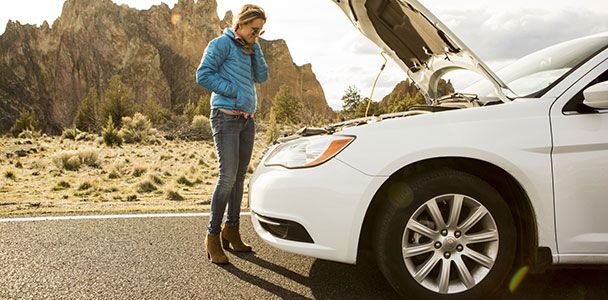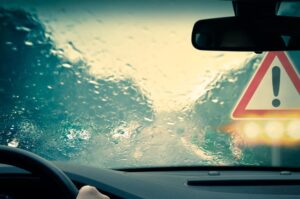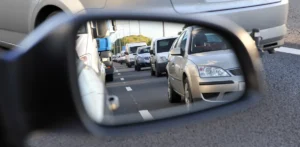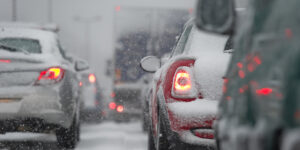Safety is paramount when driving and having the right safety features in your car can make all the difference in an emergency or during normal driving. Whether you’re taking a short or long road trip, ensuring your car is equipped with the most important safety equipment will help you be better prepared and keep you and your guests safe. These are the most important safety equipment every car should have:
1. Seat Belt
The most basic safety feature in any car is the seat belt. Their purpose is to keep people in place during a sudden stop or collision so that they are not thrown from the car or hit against the car. It is important to ensure that all of your car’s seat belts are in working order, properly adjusted, and worn by everyone in the car at all times.
2. Airbag
In addition to seat belts, airbags provide additional safety in the event of a collision. When the car hits something, they are quickly deployed to protect people from hard objects in the car. Most modern cars are equipped with front airbags for the driver and front passenger. Some cars are also equipped with side airbags to provide extra safety in the event of a side impact.
3. Antilock Braking System (ABS)
ABS is a safety feature that prevents the wheels from locking when you brake hard. This allows the driver to maintain control of the steering wheel while parking, reducing the risk of skidding and maintaining the car’s grip on the road. ABS is beneficial when you have to stop quickly or when the road is wet.
4. Traction Control System (TCS)
TCS helps prevent wheel spin when accelerating on slippery surfaces such as ice or wet concrete. It varies engine power and automatically adds braking force to each wheel to improve traction and keep the vehicle stable. TCS increases the driver’s control and reduces the chance of losing control of his vehicle in bad weather.
5. Electronic Stability Control (ESC)
ESC makes the car more stable by detecting and reducing slippage or loss of traction. It uses the brakes only on certain wheels and varies engine power to help the driver maintain control during tight turns or evasive maneuvers. ESC is especially useful for keeping the vehicle stable when cornering and on slippery surfaces and for preventing rollovers.
6. Tire Pressure Monitoring System
TPMS lets drivers know when tire pressure is too low, helping to prevent blowouts and keep them in optimal condition. When the tires are properly inflated, they can move, stop, and use less gas. TPMS can make driving safer by alerting drivers to potential tire problems before a hazard arises.
7. Emergency Braking Assistance
EBA automatically increases braking force when it detects a rapid press of the brake pedal, improving braking performance during emergency stops. It reduces braking distances and the risk of an accident in critical situations where time is of the essence.
8. Backup Camera
When reversing, a reversing camera allows the driver to see what is behind the car, allowing them to see things such as objects, people, or other cars that they may not be able to see in the rearview mirror. It makes driving safer by reducing the chance of backing up and is especially useful in tight spaces or in parking lots with many cars.
9. First Aid Kit
A well-stocked first aid kit is important to receive immediate medical attention if someone is injured or an accident occurs. It should include items such as bandages, gauze pads, tape, disinfectant wipes, scissors, tongs, and disposable gloves. Having a first aid kit on hand can be a big help when it comes to treating minor injuries or keeping more serious situations stable until help arrives.
10. Emergency Roadside Kit
A roadside emergency kit contains everything a driver needs to help them in a typical roadside emergency. Inside is usually a simple toolbox, including a screwdriver, wrench, emergency flare or reflective triangle, duct tape, flashlight with extra batteries, tire pressure gauge, and jumper cables. Roadside emergency kits can help drivers solve minor technical problems, replace a flat tire, or call for help in an emergency.
Conclusion
Installing important safety features in your car is important to ensure the safety of you, your guests, and others on the road. Modern vehicles have advanced safety features such as airbags and anti-lock braking systems (ABS), but with additional safety equipment and emergency equipment, you can be better prepared for the unexpected. Making safety a priority and keeping your car’s safety features in good working order can help you drive more safely and reduce the chance of having an accident or emergency on the road.
FAQs
1. Why must all cars have seat belts?
Seat belts are very important to keep people safe in car accidents. They help keep people in place and prevent them from flying out of the car, reducing the risk of serious injury or death.
2. What type of seat belts should my car have?
Most modern cars are equipped with front airbags for the driver and front passenger. Some cars are also equipped with side airbags and curtain airbags to better protect occupants in side impacts and rollover accidents.
3. In what ways does ABS make cars safer?
ABS prevents the wheels from locking when braking hard. This allows the driver to maintain control of the journey and shorten the distance needed to stop. It makes the vehicle more stable and provides a better grip on wet roads, reducing the risk of skidding and accidents.
4. What is a traction control system (TCS)? How does it help keep drivers safe?
By varying engine power and applying braking force to each wheel, TCS helps prevent wheelspin when the car accelerates on wet or slippery roads. It makes the vehicle more stable and easier to maneuver, especially in bad weather.
5. How does electronic stability control (ESC) make driving safer?
ESC monitors for loss of traction or skidding and stops the car by braking only certain wheels and varying engine power. This allows the driver to maintain control in an emergency and prevents the car from rolling over.
6. Why are tire pressure monitoring systems (TPMS) important?
TPMS lets the driver know when tire pressure is low, reducing the chance of a flat tire and saving fuel. Having the right amount of air in your tires will make your car safer, easier to drive, and easier to park.




